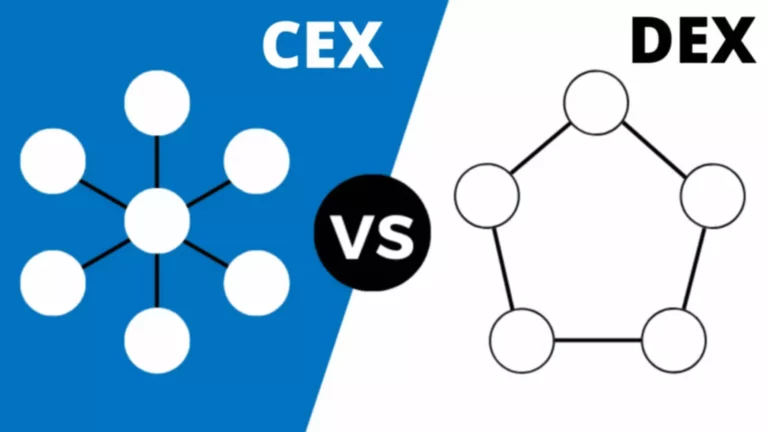These networks prioritize effectivity and compliance, offering options similar to entry controls, knowledge encryption, and audit trails to fulfill regulatory necessities and trade requirements. Private blockchains offer enhanced privateness, scalability, and governance tailor-made to the needs of enterprise functions. For example, Ethereum permits builders to build and deploy smart contracts, self-executing agreements encoded on the blockchain, enabling automated transactions and decentralized purposes. Let us take a deeper dive into the merits and demerits of public blockchain expertise. As you might now know, blockchain expertise is a extremely complicated and profound subject which consists of numerous ideas and several sorts of blockchains.
Real Estate managers can even make the most of non-public blockchains to spice up their enterprise, by maintaining the information of shoppers, land information, and other essential data. Private or hybrid blockchains, and not public blockchains are the perfect options for real estate companies. Perhaps essentially the most well-known software of public blockchain know-how is cryptocurrency, digital or digital currencies secured by cryptography and constructed on blockchain technology. Bitcoin, the primary and most well-known cryptocurrency, operates on a public blockchain, allowing customers to transact peer-to-peer with out the need for intermediaries like banks. Ethereum, another prominent public blockchain platform, allows the creation of good contracts and decentralized functions (DApps), increasing the potential use cases past simple currency transactions. Public blockchains are open to anybody with an web connection, permitting for inclusivity and participation from individuals and organizations worldwide.
Blockchain Functions
Once folks began to see the underlying technological benefits, they started creating other blockchain variations to get rid of all the problems. In this respect, personal blockchains are susceptible to information breaches and different safety threats. This is because there may be generally a limited number of validators used to achieve a consensus about transactions and information if there’s a consensus mechanism.

Private blockchains work based mostly on access controls which limit the individuals who can take part within the network. There are a number of entities which control the community and this results in reliance on third-parties to transact. In a non-public blockchain, solely the entities collaborating in a transaction could have knowledge about it, whereas the others will not be able to access it. Hyperledger Fabric of Linux Foundation is a perfect instance of a non-public blockchain.
Beginner’s Information: What Is A Decentralized Application (dapp)?
What this process does is filter any intruders trying to get into the system. Even although public blockchains got here first, they have a tendency to lack inefficiency. As a outcome, when more people attempt to use the features, it takes up a lot of assets that the platforms can’t again up.
If a company suspects the info may have been altered, it could examine the knowledge on the personal blockchain with the reconstructed data taken off the basic public blockchain fingerprint, he added. Coming to the question of which blockchain is healthier, a public blockchain seems to face out as the best option as it can be utilized in a majority of use cases as it is free from restricted access. In the case of different hybrid options, using a mixture of each private and non-private blockchains might characterize viable solutions for businesses.
What Are The Disadvantages Of A Public Blockchain?
This interoperability gap can hinder the seamless change of data and transactions between totally different methods, limiting the scalability and utility of private blockchains. Private blockchains supply larger privateness compared to their public counterparts, as access to the community is restricted to approved individuals. This heightened privacy is particularly useful for enterprises handling sensitive data or complying with regulatory necessities.
- However, in private blockchain platforms, you’ll get rules that different platforms don’t have.
- You may be in search of a blockchain network that’s superior to all others.
- Consortium blockchain examples corresponding to Energy Web Foundation and IBM Food Trust spotlight the collaborative advantages of this technology in specific industries.
- For example, Bitcoin’s blockchain has a restricted throughput, processing only a handful of transactions per second.
- Public blockchains symbolize a revolutionary approach to decentralized transaction processing, exemplified by networks like Bitcoin and Ethereum.
This transparency additionally promotes accountability, as malicious actors are much less more doubtless to engage in fraudulent activities knowing that their actions are seen to the basic public. Public blockchains symbolize a revolutionary approach to decentralized transaction processing, exemplified by networks like Bitcoin and Ethereum. These blockchain networks are open to anyone with internet access, akin to a global public ledger accessible to all. Imagine a town sq. the place everybody can observe and participate in transactions, with every transaction recorded transparently for all to see. What is essentially the most excellent difference between public vs private blockchains? The most important distinction between them is their scalability, but in the lengthy run, deciding which one to make use of will depend in your specific use case and priorities.
Public Vs Non-public Blockchains: What Is The Difference?
One advantage of a public blockchain is that the extra individuals there are in the network, the safer it becomes. The extra nodes there are inside the network, the extra complex it becomes for hackers to achieve management. This is brought on by making an attempt to succeed in consensus with a disparate group of customers.
Since its introduction, blockchain has undergone several iterations as most of the people and personal companies sought to benefit from its priceless infrastructure. The Linux Foundation’s Hyperledger Fabric is a permission blockchain framework. It is an open source difference between public and private blockchain protocol utilized by the IBM Blockchain Platform and others in delivering blockchain-for-businesses providers.
In the finish, whether you pick a private, public, or group blockchain, each has special benefits and challenges. It’s about choosing the right tool for the right job while really grasping its core traits and the means it may influence your small business. Every deal on a blockchain is checked by this network, often known as nodes. This hash hyperlinks the new block to the one before it within the guide, creating a chain. While its spectacular design has long played second fiddle to the speculative sentiment driving valuations in cryptocurrencies, blockchain’s actual technological rewards shouldn’t be discounted.
Each transaction is grouped with others in a knowledge structure called a block, and every block accommodates a unique cryptographic hash that links it to the earlier block, forming a chain. By their very nature, digital currencies are designed for public use. There isn’t any censorship to information validation as anybody can conduct transactions, for some others to verify elsewhere. The events that maintain a cryptocurrency system wouldn’t have to know each other, a feature that is antagonistic to the centralization model of private blockchains. As such, the use case of blockchain know-how as it borders on cryptocurrencies is best suited for personal blockchain networks.
Public Blockchain
More so, anyone can see the ledger and take part within the consensus course of. For example, Ethereum is one of the public blockchain platform examples. It is a distributed ledger that operates as a closed database secured with cryptographic ideas and the organization’s wants. Only these with permission can run a full node, make transactions, or validate/authenticate the blockchain adjustments https://www.xcritical.in/. A public blockchain is such that grants open entry to everyone as highlighted earlier. A typical example is seen in crypto merchandise corresponding to Bitcoin (BTC), Ethereum (ETH), and a bunch of different altcoins.

Asset tracking, document of ownership, and shared record keeping profit manufacturers, provide chain individuals such as delivery corporations, and clients in following gadgets from their origination to destination. “In the top, it’s only one personal blockchain plus one public blockchain,” Strehle stated. Over a seven-year span, blockchain is expected to grow from an estimated $4.three billion business to a whopping $228 billion trade by 2028, in accordance with a report by Insight Partners.
The public blockchain examples also transcend to the sub-alterations of open-source blockchain, which normally features expressions in good contracts and decentralized purposes. In all, a hybrid blockchain system helps a agency enjoy the closed consensus protocol model, whereas additionally coming off with full transparency. A mixture of the constructive and negative features of each private and public blockchains may be inherent in a hybrid blockchain system. This shared control reduces centralization dangers while sustaining the privacy and efficiency that collaborative businesses usually want. Multiple stakeholders can jointly handle and verify transactions without an outside get together. Consortium blockchains are widespread in industries where this shared management is important.
